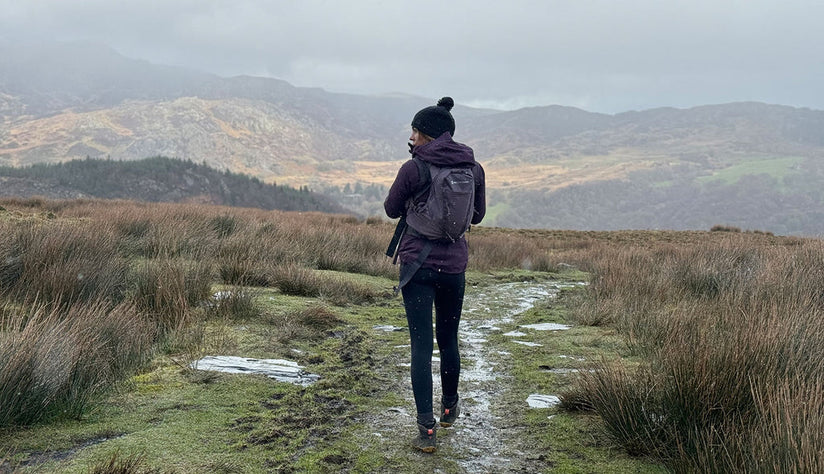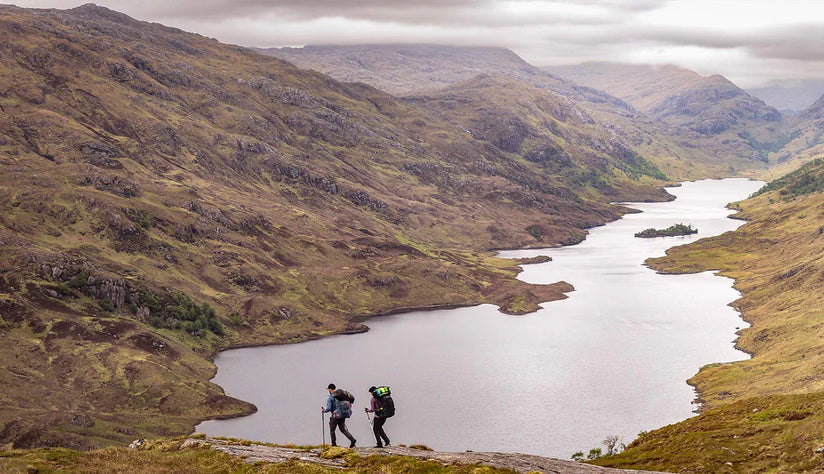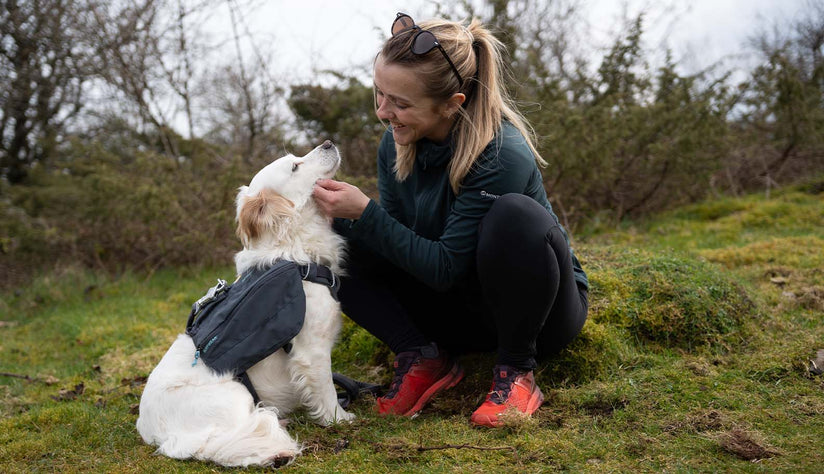The isolated northern island of Iceland is known for being the land of fire and ice, midnight sun and everlasting darkness. Formed from lava, straddling the Eurasian and North American tectonic plates, it’s a place where active volcanoes exist, as does a fine layer of black volcanic ash, covering most of Europe’s largest glacier.
Relatively close in proximity to the UK, Iceland’s landscapes feel at times oddly familiar, yet entirely foreign and exciting - a natural playground for adventure enthusiasts. From bright orange magma bubbling above ground to the warm geothermal energy, which heats everything here, from pavements in the city to the orange glow of greenhouses dotted across the town of Flúðir (where interestingly tomatoes and other salad items grow all year round.) This is Iceland – a land of contrasts and extremes, especially in winter.
Owing to its high latitude position, Iceland’s daylight hours dwindle to a measly 4 hours around the winter solstice in December. This fact, alongside temperatures dipping as low as minus 20 regularly, might make you wonder how anyone (or anything) survives in such a hostile, challenging environment. Yet exploring Iceland in winter is still possible and those who do will be well rewarded.
Being consistently in the dark in midwinter can often make you feel a sense of despair as winter exponentially speeds up, leading to dark mornings and long evenings. To survive here, embracing the elements is a must, something Icelanders do so in their stride. Visiting hot pots (geothermally heated swimming pools), hiking the incredibly varied scenery and embracing a bit of hygge (pronounced hoo-gah), a popularized Danish term translating into the art of snuggling up in winter, are all big parts of the culture here.
Embracing the Unfamiliar
Montane’s latest campaign is focused on challenging you to get out there and ‘Find Your Unknown’. By providing you with the latest innovative and protective clothing, from layers against biting cold or drizzling rain, it means you don’t have to worry about staying warm, dry, and protected in your kit as you embark on adventures exposed to winter elements. Keep reading for kit essentials we’d recommend bringing along here.
In Iceland, there are many aspects that contribute to a feeling of exploring a place that is unfamiliar or unknown. Not only is the unknown the many vast, sparsely populated roads that lead to places where few inhabitants dwell, Iceland is also home to some of the most unique preserved language that has remained relatively unchanged.
Much like the road signs, which usually lead to a tiny, isolated farmstead in the middle of nowhere, or a squiggly icon which denotes a site of interest, I was also struck by the desire to learn more about the country and its culture through its complicated language. With a language structure that directly stems from old Norse, here are some of the Icelandic sayings that feel appropriate to surviving wintertime here:
Ratiljóst (pronounced raou-dee-lhust): a phrase which translates to “enough light to navigate”. Often, when the darkness descends, we immediately reach for a head torch to help guide our way. But it’s surprising how quickly we can adapt to low-light environments and the light that may be able to draw from other natural sources, such as the starry night sky or moon.

Gluggaveður (pronounced Gloog-gavell): a classic phrase which means “window-weather.” Aka, the weather looks good from inside but, once you get out, it’s not so nice.
Að leggja höfuðið í bleyti (pronounced arh leggher hurhfud ee blehti): a phrase that translates to “to lay your head in water,” meaning you should sleep on it.
Áfram með smjörið (pronounced affram mheth smurhrif): means “on with the butter” meaning keep doing what you’re doing. Sometimes we all need a bit of motivation after all…
Ég kem alveg af fjöllum (pronounced yeh kim ahlf fjutloom): a phrase meaning “I come completely from the mountains,” which is normally aimed at those who are mountain dwellers. It means “I have no idea what you’re talking about/what’s going on” - this one might just come in handy whilst you’re out and about exploring!
Getting Around
To choose a definitive list of locations to see in Iceland in winter is almost impossible – there are so many spectacular locations to take in, although the caveat is that to access some of them, even roadside attractions, requires a certain amount of awareness of the tricky weather conditions.
In Iceland, especially in winter, all cars must have winter tyres and a four-wheel drive is recommended. Carrying spare gloves and snow clearing equipment is also a sensible idea. Driving on the roads is a completely different undertaking to driving in the UK – expect sideways blizzards, white outs, black ice, and spindrift to be regular occurrences.
Road conditions are updated regularly on websites such as road.is and made a big difference to whether we opted to see places or not. Dramatic landscapes (not dramatic driving!) was the order of the day. We were lucky that snow was down to sea level in Reykjavík, but most of the roads had been plowed so didn't really have any tricky patches, apart from some sideways spindrift on the coastal roads in the southeast of the island, and strong winds hitting the south coast which literally peppered the air with black sand.
Should you be inspired to venture to Iceland in winter, I’ve included some suggested useful resources that may be helpful in your planning. Here are a few of my favourite places pieces of kit worn whilst exploring Route 1 around Iceland in winter conditions:
Kirkufell, North West Iceland
A trip around the ring road was well worth the detour west to see Kirkufell, aka ’Church Mountain'. This distinctively shaped peak was coincidentally featured in Game of Thrones (season 6 & 7, for avid fans). With snow on the ground, but luckily calm driving conditions, we were able to see the mountain quivering like a black arrowhead against the dramatic shifting skyline.
The refracted light from the snow meant it was quite mild, and the Allez Micro Pull-on Fleece was perfect for layering underneath a Krypton Softshell Jacket to keep me warm without being super bulky. The walk-in to see the mountain is very short and, due to access issues, climbing the mountain isn’t particularly advised. It is, however, easily accessed via a car park.
It’s a remote and barren landscape and, if you’re keen to explore the west coast, there are nearby tours that you can book, including a snowmobile tour to get you onto the west side of the glacier; Langjökull in Húsafell. This area offers you the chance to soak up some geothermally heated water at Krauma Spa, Deildartunguhver, Borganes.
Borðeyri, North West Iceland
Borðeyri - the place where the sky met the water in some of the most beautiful, if quiet, landscapes that moved away from the built up modernity of Reykjavík. A down jacket was an essential item for when temperatures started to fluctuate. This is especially true for anyone exploring a subarctic climate in exposed conditions when it’s not forecast to rain. In the cool temperatures in Iceland’s Westfjords over to the north in Akureyri, we found the weather to be much cooler, hovering around minus 6 degrees.
In Borðeyri, a tiny hamlet in North West Iceland, the high pressure weather was thanks to the cold polar air pulling in from the north. The buildings were made of a rugged corrugated iron that felt reminiscent of a time gone by when everything had to brace against the harsh weather conditions. Worn between running in and out of the car, the Anti-Freeze Packable Down Jacket was perfect for travel as it packed away easily in its own bag which I could stow away whilst traveling.
Vestrahorn, Stokknes, South East Iceland
A dramatic mountainscape with black sands, Vestrahorn is an often photographed headland that resembles something out of Star Wars. It was especially unique to see the black sand dunes with snow drifts and see the mountain in snow - it felt like we were in a black-and-white image.
The bitter winds and roar of the sea made for an impressive location to experience, whilst a radar station reminded us of the exposed promontory of where we were. The Krypton Softshell Hoodie, along with the Pip Beanie hat, kept the wind chill off and allowed us to explore comfortably in the remaining daylight.
Check out this useful resource to find out more about this unique landscape and how to access it with ease.
Falljökull, South East Iceland
It wouldn’t be a trip to Iceland without having an opportunity to explore one of Europe’s largest glaciers on Vatnajokull. A long way round from the north of Iceland, we broke our visit with various stops through barren landscapes that skirt along Route 1, before we managed to navigate the tricky road conditions along the south east coast until we got to Skaftafjell.
As part of our visit, we booked an experienced glacier guide and headed out to see Falljökull with my Fast Alpine 40L backpack in tow to carry all my essentials.This included: spare layers, a harness, a helmet, and crampons - all of which were needed to explore the glacier with ease. The Fast Alpine 40L is a roomy backpack, made of a tough Raptor Ripstop 420D material to minimize damage from technical winter tools.
Our guide, Ollie, from Arctic Adventures navigated us through the intricate and technical crevassed landscape. It was useful to have a pack that was easy to open whilst wearing gloves (essential so you don’t fall and cut your hand on the brittle ice) and designed for ease of wear with mitt-friendly metal buckles on the hip belt and click-and-go chest harness to make sure the weight was evenly distributed.
To say it was a photographer’s paradise is an understatement - the sheer scale of the hanging glaciers, combined with the gaping crevasses made it a unique, hostile environment to see up close, and it was a privilege to explore it in winter conditions. The glacier changes and shifts in size all the time, and it's easy to imagine the sheer weight of the ice and weight of it.
The swirling cloud allowed us enough visibility to appreciate the vastness of the landscape with shelves of ice and seracs perched at the mouth of the glacier. I was fascinated by the colour of the glacier, outlined in black due to the ash cloud of the Eyjafjallajökull eruption.

Closing thoughts
Iceland never fails to amaze me for its infinite geology or the cinematic landscapes that vary between desolate bleakness to soaring mountains that dwarf the horizon. Sea and mountain, rugged black coastline that captures my imagination every time I visit. It’s a rewarding, humbling location to visit no matter what time of the year you visit, but I think there’s something uniquely special about visiting in mid-winter. As the term Ratiljóst (pronounced raou-dee-lhust) suggests, I hope you find enough light to navigate as you search out your favourite Icelandic wonders when you go and visit.
This article was brought to you by #TeamMontane’s Jessie Leong. Jessie is a passionate hiker and climber. To hear more from her, don’t miss this Q&A inspired by her 4000m ascent in the Alps.
















